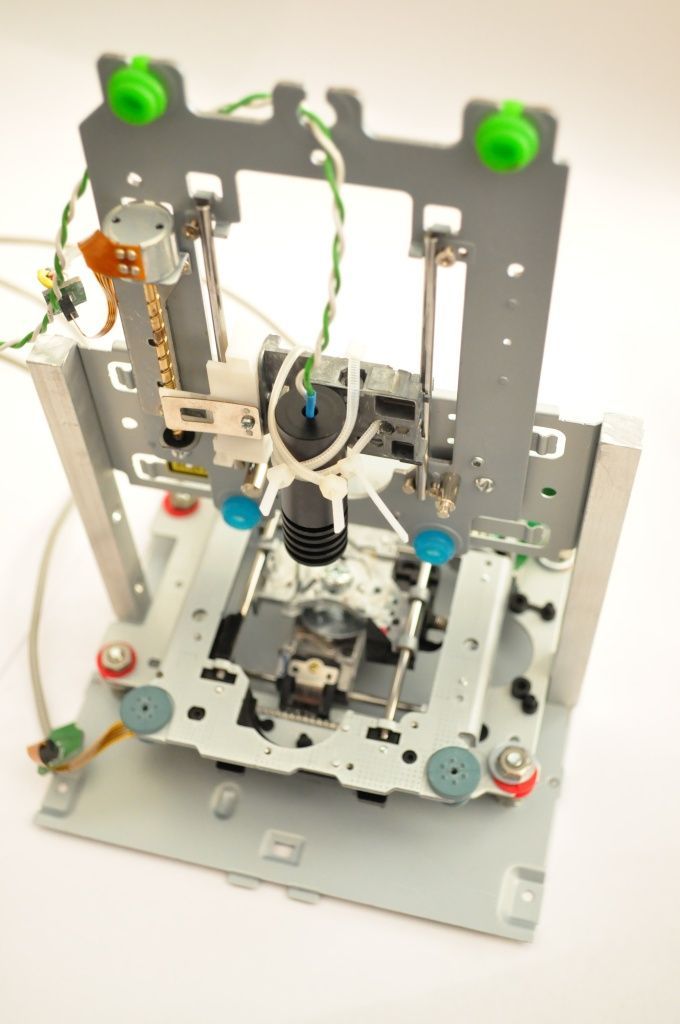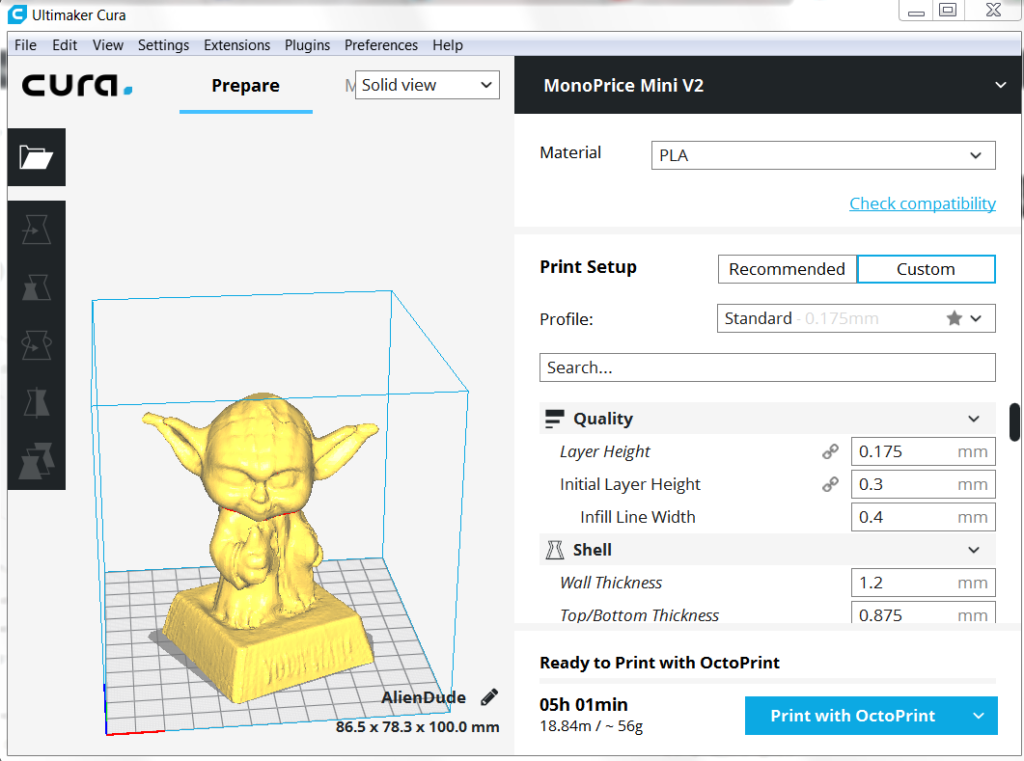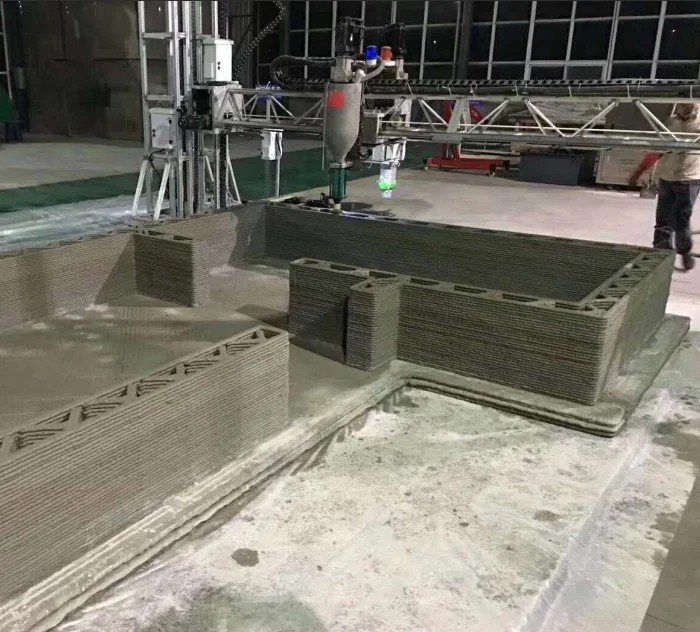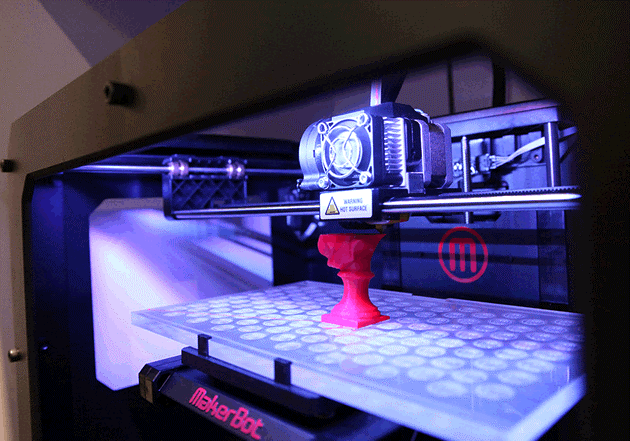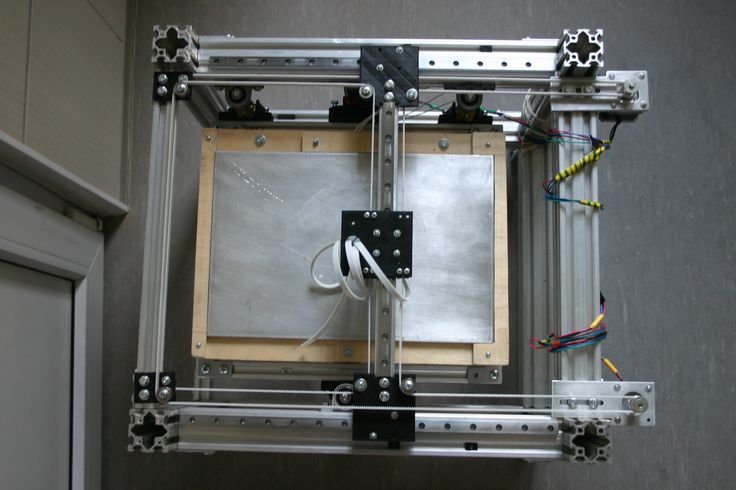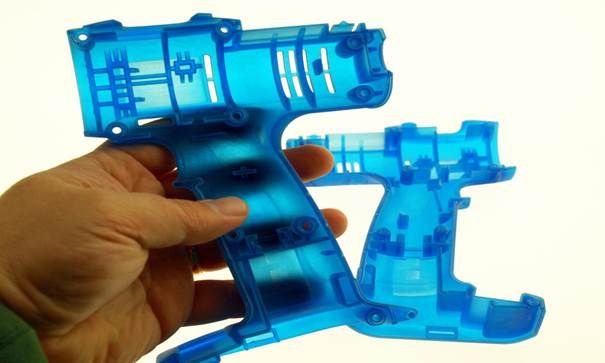3D printed implants
3D Printed Implants: The Top Applications
3D printing news Medical 3D-Printed Medical Implants: Discover Some of the Most Innovative Projects
Published on October 1, 2021 by Carlota V.
Additive manufacturing in the medical implant sector is expected to reach $0.27 Billion by 2025. Previously, we presented you with a selection of the most innovative 3D-printed orthoses on the market. 3D printing enables the customization of medical implants that respond to each patient’s specific needs. The solutions created with 3D printing regularly outperform traditional implant methods in terms of design, manufacturing times, associated costs, and often times patient comfort and experience with the implant is improved. Today, we take a look at 3D printed implants—used to repair an organ, treat a disease, or supplement a function, all over a generally long period of time. 3D printing implants today are made of titanium, a metal prized by the medical sector for its biocompatibility. The body generally accepts this material well, a key component when it comes to implant placement. Below you will find some examples of 3D printed implants—this list is not exhaustive so feel free to share your comments at the bottom of the article!
3D-Printed Silicone Heart Valves
Of course, implants do not just include bones, though those are easier to create and thus more prolific on the market. Recently, we have also seen examples of implants for parts originally made from organic tissue. For example, this case of a bioinspired heart valve prosthesis, which was made using silicone AM. Created in a collaboration between a team of researchers from ETH Zurich and the South African company Strait Access Technologies, these artificial 3D printed heart valves were created as a way to replace valves in an aging population. The researchers decided to create the valve out of silicone as it is compatible with the human body. Additionally, by using 3D printing they would be able to make a valve that is a more perfect match to the patient.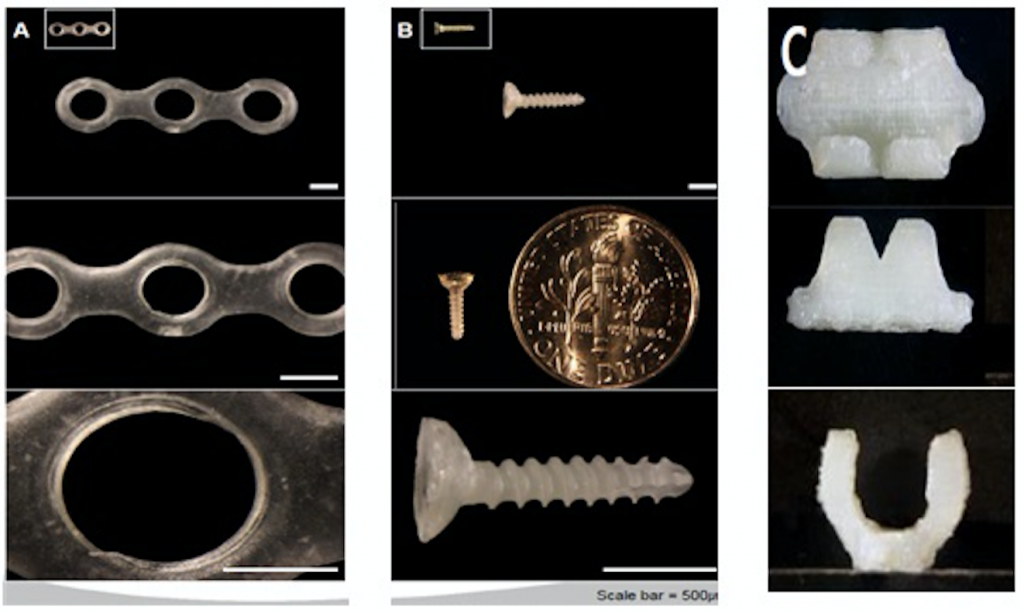 It should be noted that though the initial results were promising, they estimate that it will take another 10 years before these 3D printed heart valves could actually be on the market.
It should be noted that though the initial results were promising, they estimate that it will take another 10 years before these 3D printed heart valves could actually be on the market.
A 3D-Printed Carbon Artificial Retina
An additional application for 3D printed beyond bones is for retinas. In this case, an Australian engineer developed a 3D-printed artificial retina made out of carbon to help people see again. Dr. Matthew Griffith from the University of Sydney made a breakthrough when he realized that essentially, like a computer, a body is just a carbon-based semiconductor. With this knowledge, he determined that he could replicate an eye by creating a carbon (and thus fully bio-compatible) device that absorbed light and then created an electronic charge, exactly like an eye. Furthermore, thanks to low-cost manufacturing with 3D printing, it was entirely possible for him to design this artificial retina himself. Though the device is not actually completed yet and will not even go to clinical studies until the next three to five years, Griffith is hopeful that it will be useful for patients who have lost their sight, even potentially restoring color vision which is not currently possible.
A New Way to Make Knee Replacements
According to statistics, nearly 1 million people undergo knee and hip surgeries every year, making them one of the most common replacement surgeries. And yet, many of these replacements fail, and astonishingly despite this fact, joint reconstruction technology has not changed significantly in the past 50 years or so. American company Monogram Orthopedics is on a mission to change this. They are currently developing a product solution combining 3D printing and robotics to enable mass personalization of orthopedic implants. These implants are designed, according to the company, for maximum cortical contact and stability and designing a part that is as close to the patient’s original anatomy (thanks to a CT scan which will allow for a 3D representation of the original bone structure and 3D printing using a titanium alloy) as possible, making implants less painful and less likely to fail.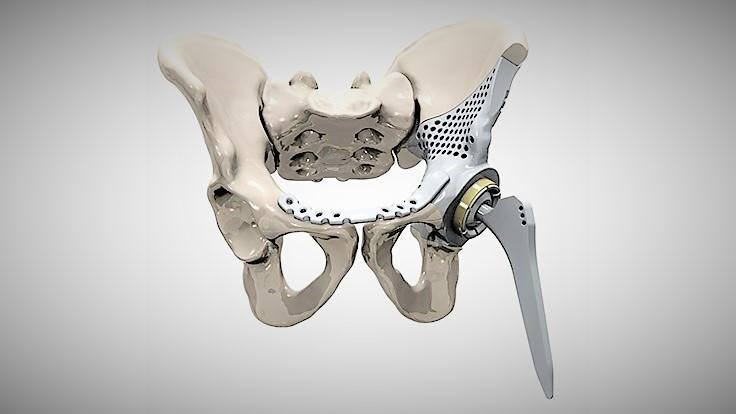 Though they have not yet commercialized the product, they have reached a number of achievements including raising $16.7M and already completed their first Total Knee Arthoroplasty (TKA) procedure in March 2021.
Though they have not yet commercialized the product, they have reached a number of achievements including raising $16.7M and already completed their first Total Knee Arthoroplasty (TKA) procedure in March 2021.
Restorative Oral-maxillofacial Implants
AB Dental uses Selective Laser Sintering (SLS) to create customized Implant Systems and has innovated the technology and application in the oral-maxillofacial field. The company’s system allows doctors to plan dental and facial restoration treatments with more precision compared to traditional methods. The company offers several restorative 3D printed implants for patients, including sinus roof augmentation, orbital bone repair, and a subperiosteal implant for resorbed jaws.
Photo Credit: AB Dental
Customized Microporous Bones
With the trademarked motto “We Print Bone”, Particle3D was launched in 2014 by two medical engineering students and their professor with the goal of developing a new solution for replacing destroyed or surgically removed bone.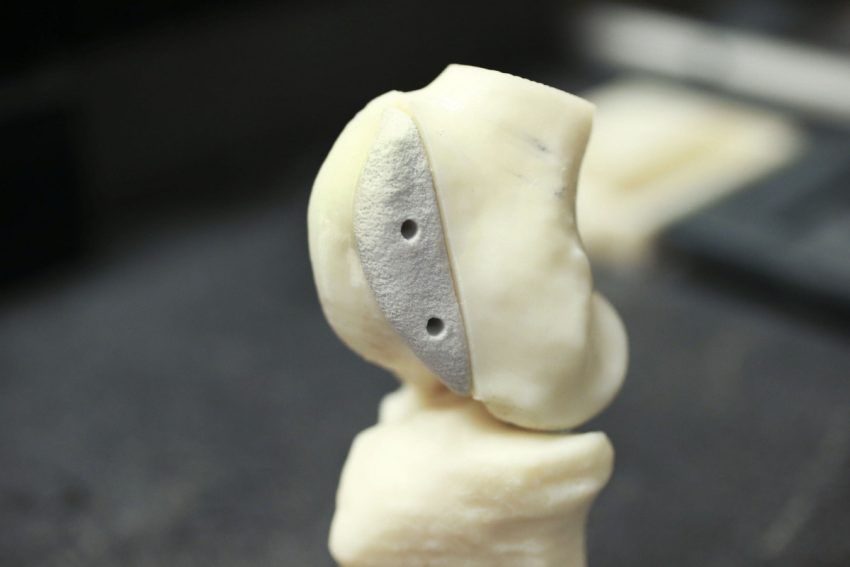 Today, Particle3D is further developing patient-specific bone implants based on a patient’s own CT/MRI scan which results in 3D printed implants that provide uniquely bone-like internal architecture containing micro- and macro porosities—just like real bone.
Today, Particle3D is further developing patient-specific bone implants based on a patient’s own CT/MRI scan which results in 3D printed implants that provide uniquely bone-like internal architecture containing micro- and macro porosities—just like real bone.
3D-Printed Spinal Interbody Fusion Implant
NanoHive Medical is a pioneer in 3D printed spinal interbody fusion implants. Using its proprietary, biomimetic Soft Titanium lattice technology, the company offers surgeons and their patient’s biomechanical elastic modulus properties, precise diagnostic imaging, and osteoblast cell attraction and integration—all resulting in less stiffness or discomfort experienced for the patient and faster implant stability when compared to existing PEEK implant methods.
Photo Credit: NanoHive Medical
Nexxt Matrixx
The US company Nexxt Spine has been specializing in the manufacture of implants for spinal diseases for several years. With Nexxt Matrixx, the company has achieved another innovation: the 3D-printed titanium implants are intended to support osteogenesis, improve surface topography and promote the production of angiogenic factors.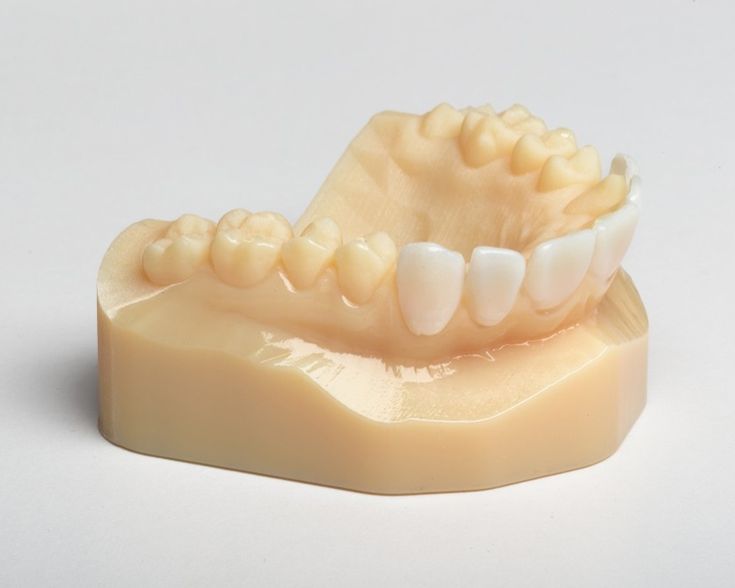 The naming seems to be inspired by the 75% porous grid of the implant, which promotes osteointegration and radiological visualization. The company uses equipment from GE Additive in the manufacture of its implants and thus relies on the DMLM process to manufacture its titanium parts. Andy Elsbury, the founder of Nexxt Spine states that patients and clinics particularly benefit from the strength and biocompatibility of the titanium implants.
The naming seems to be inspired by the 75% porous grid of the implant, which promotes osteointegration and radiological visualization. The company uses equipment from GE Additive in the manufacture of its implants and thus relies on the DMLM process to manufacture its titanium parts. Andy Elsbury, the founder of Nexxt Spine states that patients and clinics particularly benefit from the strength and biocompatibility of the titanium implants.
Integration of an Eye Implant
The orbit is the bony cavity in which the eye sits, each one different in shape from person to person. Surgical procedures around the orbit are therefore complex and often long, especially when it comes to implants: doctors must ensure the position of the orbit and its correct insertion. At the Hong Kong Polytechnic University Industrial Center, a team 3D printed models to facilitate these operations. The team starts with the scanner and the patient’s x-ray to create a CAD model. She then prints the upper and lower parts of a mold on a Stratasys machine with a biocompatible thermoplastic and then presses a sheet of titanium into the mold to obtain the shape of the implant.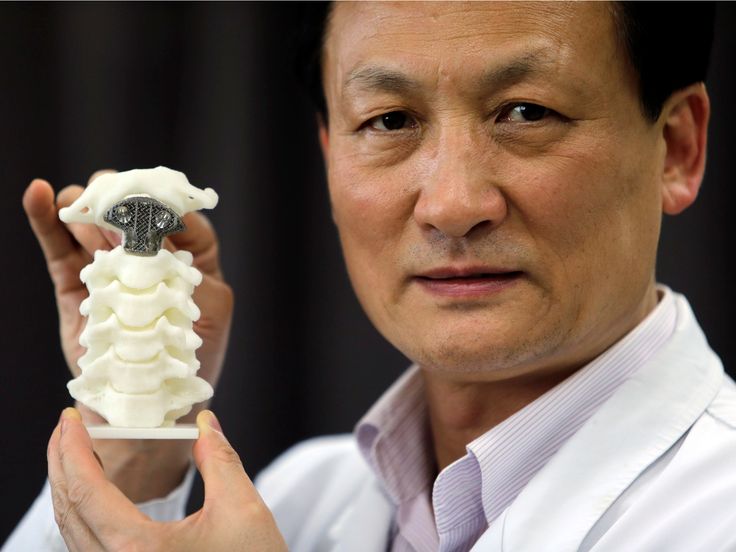 This is not a 3D printed implant per se, but we wanted to present this application case to you which significantly reduces operating times.
This is not a 3D printed implant per se, but we wanted to present this application case to you which significantly reduces operating times.
On the left, the mold used to create the shape of the implant; on the right, an orbit model to help surgeons with their operations. (Photo Credit: Stratasys)
The First 3D-Printed PEEK Clavicle Implant
In February 2019, we informed you of a great breakthrough in the medical world: the manufacturer of 3D printers IEMAI 3D and the Kunming University Hospital had successfully implanted a clavicle 3D printed using PEEK, a highly resistant and biocompatible high-performance thermoplastic. The patient who received this 3D printed implant suffered from cancer and, having to undergo chemotherapy sessions, could not receive a metal implant. The device in question was tailor-made: additive manufacturing made it possible to meet patient requirements much more quickly and easily. It seems that PEEK was very well accepted by the latter’s body. The implant was printed on the IEMAI 3D MAGIC-HT-M machine.
The implant was printed on the IEMAI 3D MAGIC-HT-M machine.
Photo Credit: IEMAI 3D
3D-Printed Implants for Ear
The hammer, anvil, and stirrup are three bones located in our ear, the smallest in our human body because they do not grow after birth. Their shape, size, and position are therefore very important for the proper functioning of the ear. However, sometimes these bones break and need to be replaced. This is what happened in South Africa where a patient had 3D printed titanium bones implanted following a car accident. After a 3D scan of his middle ear, the team of surgeons behind the operation was able to model a bespoke implant, which was then printed on a powder bed laser fusion machine. Titanium was favored in this case for its biocompatibility and strength.
Ossicles are among the smallest bones in the human body. The picture shows a real ossicle and not the implant
3D-Printed Jaw Implant After Tumor Removal
Anelia Myburgh, is an Australian woman from Melbourne who improved her quality of life thanks to additive manufacturing technologies.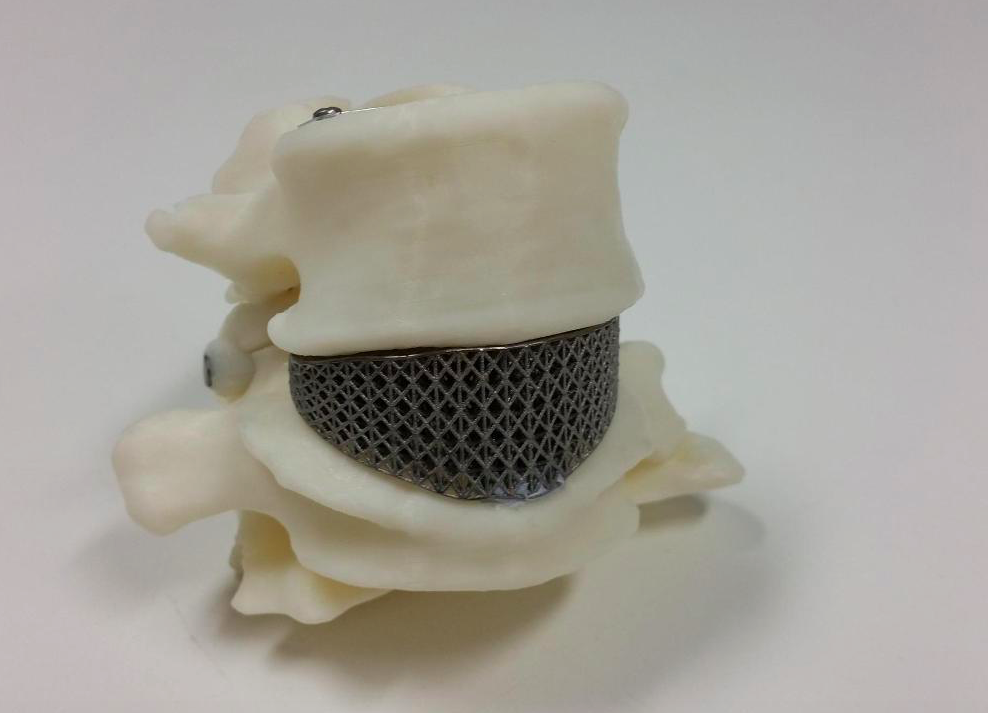 Due to a malignant tumor located in her jaw and teeth, the doctors were forced to remove it, which caused a disfigurement in the woman’s face by losing more than 80% of the jaw. The case of de Myburgh led maxillofacial surgeon George Dimitroulis to explore the possibilities of additive manufacturing for the creation of custom models. Thus, he created a jaw implant with a titanium frame capable of incorporating bone grafts. After more than 5 hours of surgery and several months of recovery, we can affirm that the operation was a complete success and the advances in this technology gave Anelia the security and confidence in her life.
Due to a malignant tumor located in her jaw and teeth, the doctors were forced to remove it, which caused a disfigurement in the woman’s face by losing more than 80% of the jaw. The case of de Myburgh led maxillofacial surgeon George Dimitroulis to explore the possibilities of additive manufacturing for the creation of custom models. Thus, he created a jaw implant with a titanium frame capable of incorporating bone grafts. After more than 5 hours of surgery and several months of recovery, we can affirm that the operation was a complete success and the advances in this technology gave Anelia the security and confidence in her life.
Renishaw’s Rib Cage
Due to breast cancer, 71-year-old Welshman Peter Maggs underwent an 8-hour operation to remove the tumor. In the surgical process, three ribs and part of his sternum were removed, so doctors looked for a way to replace the missing parts.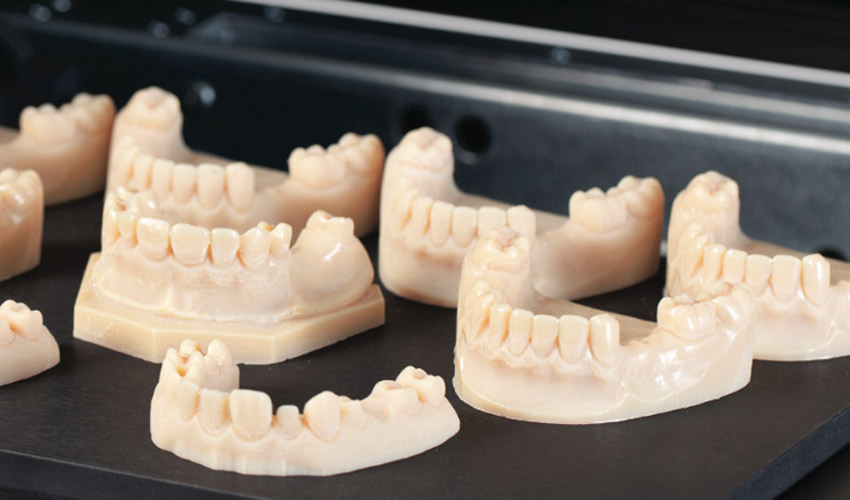 To do this, they turned to metal additive manufacturing, specifically Renishaw solutions, in order to create a high-quality, biocompatible model of the rib cage. Cardiothoracic surgeon Ira Goldsmith explained that one of the main benefits of using a 3D printed prosthesis is that it can be completely customized and tailored to the patient. And he proved it, offering Maggs a fast and efficient solution.
To do this, they turned to metal additive manufacturing, specifically Renishaw solutions, in order to create a high-quality, biocompatible model of the rib cage. Cardiothoracic surgeon Ira Goldsmith explained that one of the main benefits of using a 3D printed prosthesis is that it can be completely customized and tailored to the patient. And he proved it, offering Maggs a fast and efficient solution.
Flexible Polyamide 3D Printed Implants for Ribs
In 2018, In Bulgaria, Ivaylo Josifov arrived at the hospital with tonsillitis and left with a new 3D-printed rib. A first for the country. Doctors discovered a deformity in his ribs that pressed against the lungs, prompting immediate surgery. And to cure it, in partnership with Polish 3D printer manufacturer 3DGence, doctors have decided to use additive manufacturing. To do this, they first performed a 3D scanner of the patient’s bone and then 3D printed it from flexible polyamide. Thanks to the operation, and the cooperation between 3D printing players and doctors, Ivaylo Josifov is now in good health.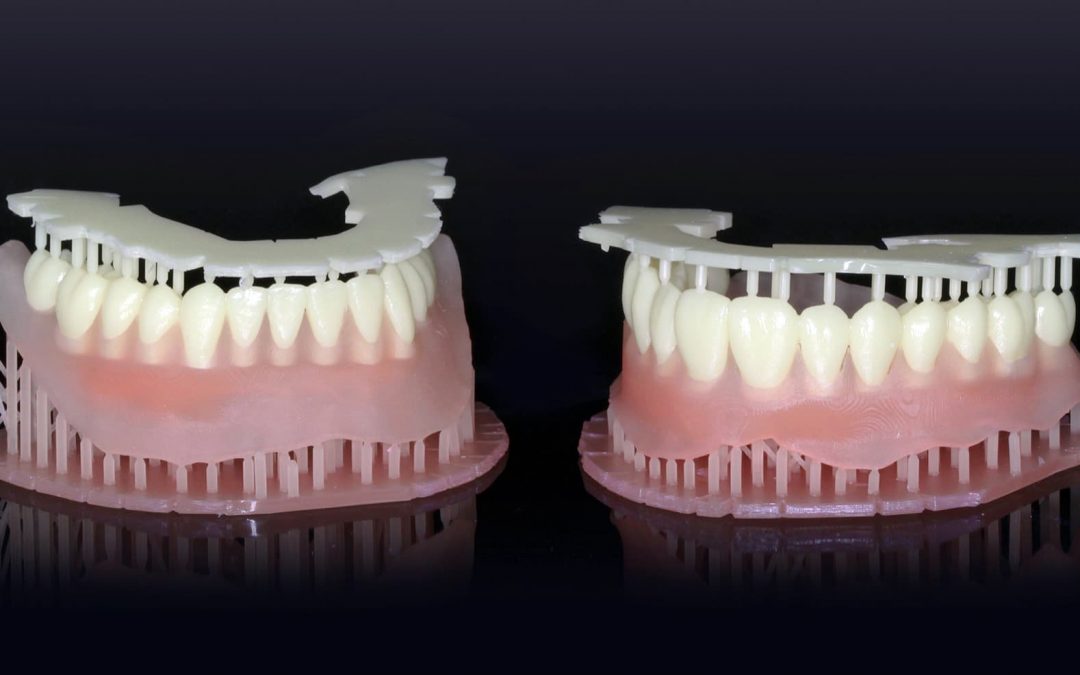
Photo Credit: 3DGence
A Cranial 3D-Printed Implant
Tiffany Cullern is a young woman from Great Britain who suffered the fate of a brain tumor at the age of 20. It was a psammomatous juvenile ossifying fibroma, a benign tumor that had to be removed quickly so that the young woman’s brain was not damaged. So the doctors decided to have Tiffany undergo a 6-hour operation to remove the tumor. Although the operation went well, the girl did not respond two days later: her brain was swollen. In order to reduce the pressure, the doctors, therefore, had to remove part of the skull and the British woman had to live with 12.7 cm fewer skulls for the first three weeks after the operation. She was then implanted with a 3D-printed implant made of titanium, plastic, and calcium that has since replaced the missing part of the skull.
Partially 3D-Printed Cartilage Implant to Fight Osteoarthritis
In humans and dogs, a tiny layer of cartilage preserves joint surfaces and allows bones to glide together properly.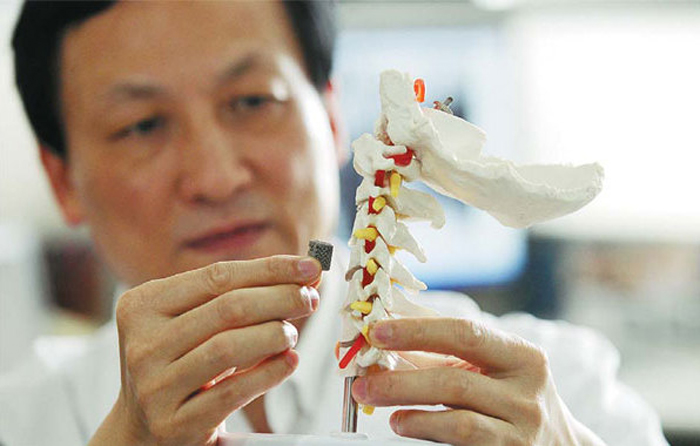 Unfortunately, over time, this cartilage breaks down, resulting in osteoarthritis and therefore joint pain. To overcome this, researchers at North Carolina State University developed a textile-based implant containing cartilage derived from the patient’s stem cells. Partly 3D printed, this type of implant has been successfully tested on a group of dogs with hip problems. This group was split into two, and one part received the implant and the other did not. As you can imagine, the dogs that received the implant recovered to their full potential 4 months after the operation.
Unfortunately, over time, this cartilage breaks down, resulting in osteoarthritis and therefore joint pain. To overcome this, researchers at North Carolina State University developed a textile-based implant containing cartilage derived from the patient’s stem cells. Partly 3D printed, this type of implant has been successfully tested on a group of dogs with hip problems. This group was split into two, and one part received the implant and the other did not. As you can imagine, the dogs that received the implant recovered to their full potential 4 months after the operation.
Photo Credit: Deposiphoto
What did you think of these 3D-printed medical implants? If you want to share some more we might have missed, you can leave a comment in the section below or on our Facebook and Twitter pages! Sign up for our free weekly Newsletter, all the latest news in 3D printing straight to your inbox!
3D Printing Is Ready To Tackle Plastic Body Implants
3D-printed skull implant by German MedTech start-up Kumovis.
After an accident left a 40-year-old woman in Sweden with a massive head injury late last year, she received a 3D-printed implant made from a plastic called PEEK to repair her skull.
It was the first time a hospital had designed and 3D printed an implant of this kind on-site, and it could prove a turning point for 3D printing in medical care.
“As far as we know, we are the world’s first to make 3D implants entirely in a hospital, which means that the implants will be better adapted to the patients, right from the start," says Einar Heiberg Brandt, medical engineer in Clinical Physiology at Skåne University Hospital, Sweden. "This will lead to faster surgeries and fewer complications."
In-hospital 3D printing is still in the early stages, but shows great promise, industry experts agree. Although 3D printing has been used in healthcare for more than a decade to manufacture titanium and stainless steel implants, PEEK plastic expands opportunities for the technology to move off the shop floors of medical device manufacturers and into labs at hospitals and clinics worldwide.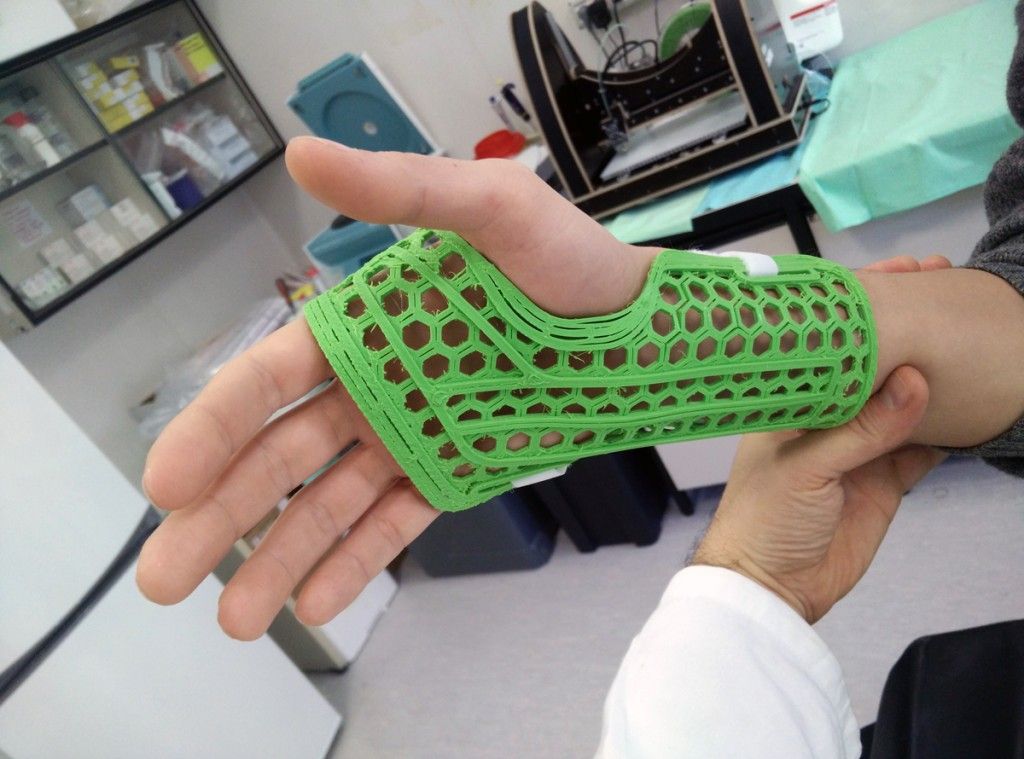
In fact, medical facilities represent a vast new market for 3D printing. The healthcare segment of the 3D printing industry, which includes dental and 3D-printed pharmaceuticals, currently is valued at nearly $3 billion.
3D Printing at Hospitals
Institutions, such as the Mayo Clinic in Minn. and VA hospitals nationwide, have extensive 3D printing labs. The work there is mostly patient-specific 3D-printed medical models, surgical training tools, and orthopedic braces. However, in the not too distant future, these hospitals may be 3D printing patient-specific implants in PEEK for all types of surgeries.
MORE FROMFORBES ADVISOR
Kumovis offers a workflow, hardware, and materials for in-hospital manufacturing of PEEK medical ... [+] implants.
KumovisUsing a 3D printer and PEEK filament brings a long list of benefits to hospitals, while still having substantial hurdles. The method, when compared to traditional ways medical devices are made, namely machining and injection molding, can be done on-site at the point of care. This means faster implants, lower costs, and closer coordination between the surgeon and the technicians producing the implant.
This means faster implants, lower costs, and closer coordination between the surgeon and the technicians producing the implant.
By using the patient's data from scans and X-rays, hospitals can 3D print a custom implant that fits precisely into the defect space.
Studies show that patient-specific implants shorten surgery time, lower risks of infection, result in better outcomes, and dramatically reduce the length of a hospital stay. 3D printing the implants as needed also relieves the hospital from having to keep an inventory of expensive implants on hand.
Although, as of today, there are no 3D-printed PEEK implants manufactured at hospitals approved by the FDA, that may soon change.
A German start-up specializing in 3D-printed PEEK skull implants, Kumovis, says it’s completing the final hurdles in the FDA approval process.
"There's a lot of excitement around 3D printing on-site at hospitals and the projects that are driving manufacturing at the point of care and showing what is possible," says Miriam Haerst, co-founder and co-CEO of Kumovis.
South Carolina-based 3D Systems, one of the oldest and largest 3D printer manufacturers in the world, recently announced its plans to acquire Kumovis in order to expand from metal implants to PEEK implants at the point of care.
“As [3D printing] technology becomes more user-friendly for medical professionals, more hospitals will be able to implement end-to-end solutions for personalized surgery,” says Gautam Gupta, vice president and general manager of 3D Systems medical devices practice. “This will disrupt existing healthcare models, improve the quality of care, and crucially, save more lives.”
The Kumovis acquisition fits nicely into 3D Systems' established healthcare business and adds a new focus on decentralizing the production of medical implants.
“Shifting the manufacturing to the hospitals will be a game-changer when it comes to the availability of implants,” says Haerst.
For hospitals to become manufacturers, however, requires technical and engineering staff, regulatory processes, along with equipment. This could be managed on-site in a cooperative agreement by current medical device manufacturers, Haerst says.
PEEK Plastic vs. Titanium for Implants
PEEK has had FDA approval as an implant material for years when machined, but not yet when 3D printed. Although PEEK is used in numerous implants on the market today from spinal cages to ankle joints, 3D-printed PEEK still has to prove it has the same weight bearing and wear attributes as milled or molded PEEK.
German materials manufacturer Evonik produces an implant grade, 3D printing filament, VESTAKEEP i4 ... [+]4 G, that can be used in permanent medical implants.
EvonikOverall, this bio-compatible material has several perceived advantages over stainless steel and titanium: it's lightweight, permeable to ultrasound, and practically invisible to CT and MRI scans enabling better post-op monitoring.
Over the years 3D-printed titanium gained a reputation for better bone integration and thousands of joint and spine implants are 3D printed every year by major manufacturers, such as Stryker.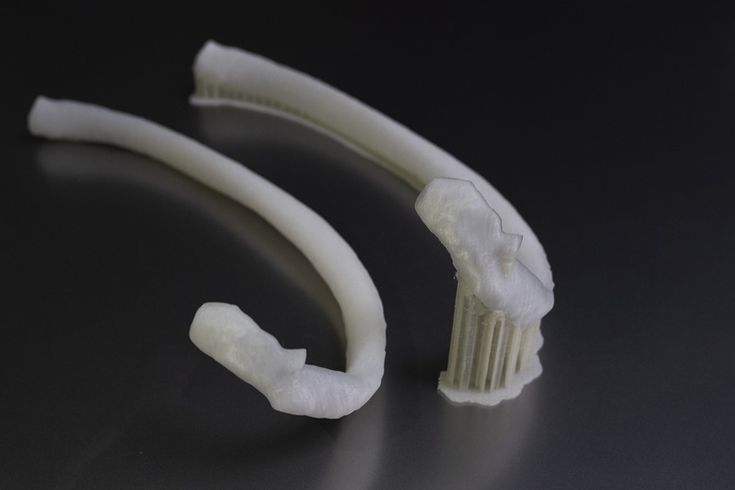 But PEEK has changed, says Marc Knebel, head of medical systems at Evonik, which manufactures PEEK for 3D printing as well as injection molding and milling.
But PEEK has changed, says Marc Knebel, head of medical systems at Evonik, which manufactures PEEK for 3D printing as well as injection molding and milling.
"Today, PEEK can be designed with additives to gain new features, such as better osteointegration," says Knebel. "We are working with a couple of hospitals on [3D-printed implants] already. The first ones will be active within the next five years."
A 3D printing lab situated next to the operating room ready to churn out individualized implants designed from patient data at a moment’s notice is still a long way off. Regulatory hurdles remain, clinical studies are still in progress, and building buy-in from hospitals will take time. What we’re seeing today, however, are the innovators taking the first steps.
3D printed implants made from a mixture of bone powder and plastic could be ideal for bone replacement
Many people require surgery to replace the bones of the skull and face - usually a fragment of the patient's own legs is used during this procedure.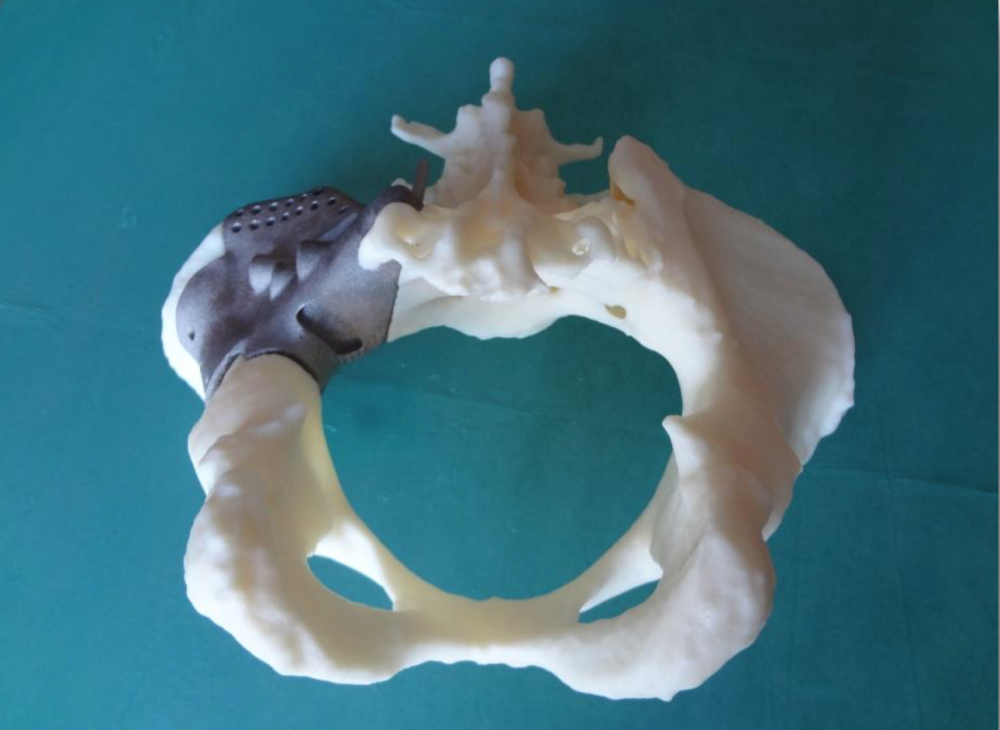 However, the results often leave much to be desired, not to mention possible complications. Fortunately, there is a lot of research being done on alternative methods of making bones that are ideal for a particular site. We are talking about 3D printing of partially plastic structures on which living cells can be placed. However, the difficulty is to stimulate the cells to form bone tissue - for this, scientists from Johns Hopkins University used bone powder.
However, the results often leave much to be desired, not to mention possible complications. Fortunately, there is a lot of research being done on alternative methods of making bones that are ideal for a particular site. We are talking about 3D printing of partially plastic structures on which living cells can be placed. However, the difficulty is to stimulate the cells to form bone tissue - for this, scientists from Johns Hopkins University used bone powder.
Scientists have been working on 3D printing plastic implants – in this case, polycaprolactone, a biodegradable material with a low melting point (80-100 degrees). This plastic provides the necessary strength, but is not able to stimulate cell growth - so the researchers used it in combination with powdered bone material obtained from cows. It is bone powder that contains structural proteins that allow stem cells to form bone tissue. In addition, according to scientists, the powder makes the plastic rougher, which helps to fix cells and enhance growth factors.
To evaluate the potential of the composite material, the scientists tested various combinations of bone powder and polycaprolactone. The material with the maximum bone content, 85%, was not suitable for 3D printing at all - the structures simply fell apart. As for the other combinations that were printed, they were evaluated in terms of their ability to stimulate cell growth. For this, stem cells extracted from the patient's adipose tissue during liposuction were used in the construction.
After three weeks, the scientists evaluated the results - the greatest progress towards transformation into bone tissue was shown by an implant with a bone powder content of 70%. Samples with a bone content of 30% also showed good results in all tests, although not as impressive - so the researchers decided to conduct an experiment in real conditions.
During the experiment, scientists transplanted 3D-printed bone implants into the skulls of mice, in which holes were made that were unable to heal on their own.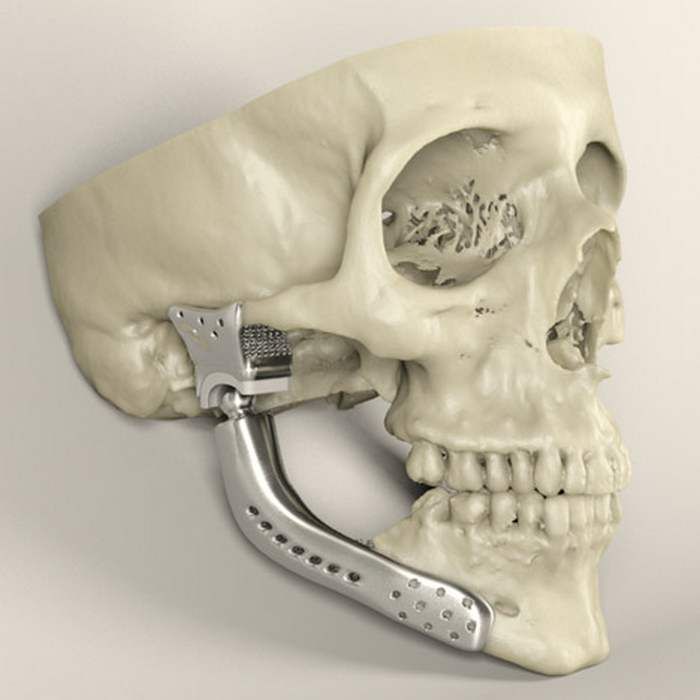 After some time, the mice underwent computed tomography, which showed that the material with a content of 30% and 70% bone powder led to much faster bone development compared to pure polycaprolactone implants.
After some time, the mice underwent computed tomography, which showed that the material with a content of 30% and 70% bone powder led to much faster bone development compared to pure polycaprolactone implants.
Experiments with various combinations are still ongoing - scientists intend to determine their advantages and disadvantages, as well as to conduct tests with human bones and other improvements that, in particular, can stimulate the formation of new blood vessels.
Tags: 3D printing, implant, Johns Hopkins University, polycaprolactone, 3D printer
3D printed implants help bone growth , and the implant itself gradually dissolved.
NYU surgeons and scientists showed that the implanted structures were naturally absorbed into the test animals as new bone gradually replaced the implant. The research team published the results of their study in the journal Tissue Engineering and Regenerative Medicine.
The implants to replace the bone defect were created using 3D robotic printing. First, 2D layers were printed, they fit into a three-dimensional object, which then, after heating, gave it the final ceramic shape. This 3D printing technology has recently been applied in medicine to print skin, ears and heart valves.
First, 2D layers were printed, they fit into a three-dimensional object, which then, after heating, gave it the final ceramic shape. This 3D printing technology has recently been applied in medicine to print skin, ears and heart valves.
“Our 3D structure represents the best implant because of its ability to regenerate real bone,” says bioengineer Paulo Coelho, DDS, PhD. "Our latest research results bring us closer to the possibility of creating implants to repair congenital bone defects in children or people with injured limbs."
Scientists believe that their new ceramic implant is more similar in composition and shape to real bone tissue than other implants that have added plastic elasticizers for flexibility.
An important feature of the created ceramic devices is that they were constructed from molecules of beta-tricalcium phosphate - the same chemicals found in bone tissue, which allows the body to dissolve the implants.
NYU-made implants had one feature - they were coated with dipyridamole, an antiplatelet agent that has the property of accelerating bone formation.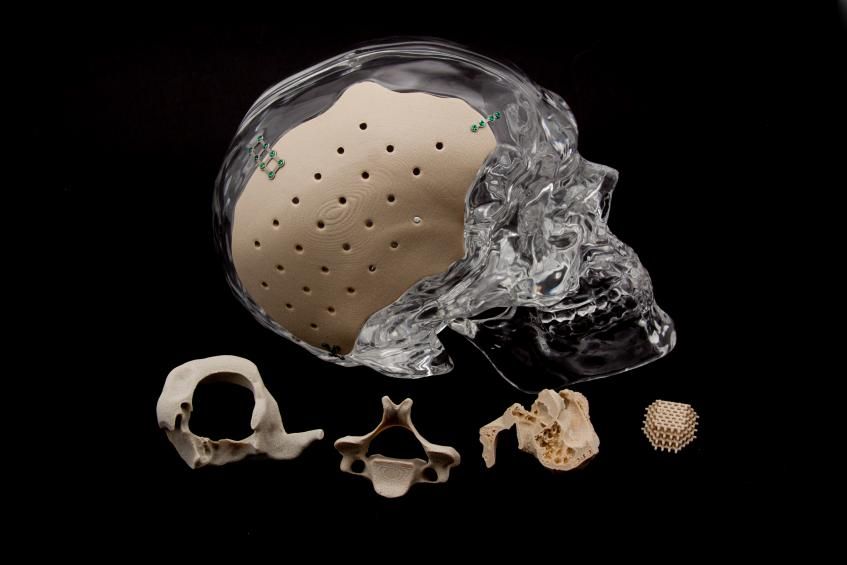 In addition, dipyridamole stimulates the formation of new vessels by attracting and activating bone stem cells, which, in turn, gives the newly formed bone tissue flexibility. According to the researchers, these soft tissues give the implant-grown bone scaffold the same flexibility as natural bone.
In addition, dipyridamole stimulates the formation of new vessels by attracting and activating bone stem cells, which, in turn, gives the newly formed bone tissue flexibility. According to the researchers, these soft tissues give the implant-grown bone scaffold the same flexibility as natural bone.
Dr. Bruce N. Kronstein, NYU believes dipyridamole, which has been known for over 50 years as a safe blood thinner, is the key. And since the release of dipyridamole from the surface of the implant occurs gradually, as the implant is resorbed, the risk of side effects of this drug is significantly reduced.
In animal experiments, researchers have used implants to repair small defects created surgically by creating holes and removing pieces of bone.
Scientists have found that 6 months after implantation, the animal's body resorbed almost 77% of the implant. They also noted that as the implants dissolve, bone tissue replaces the supporting lattice structures of the implant.


